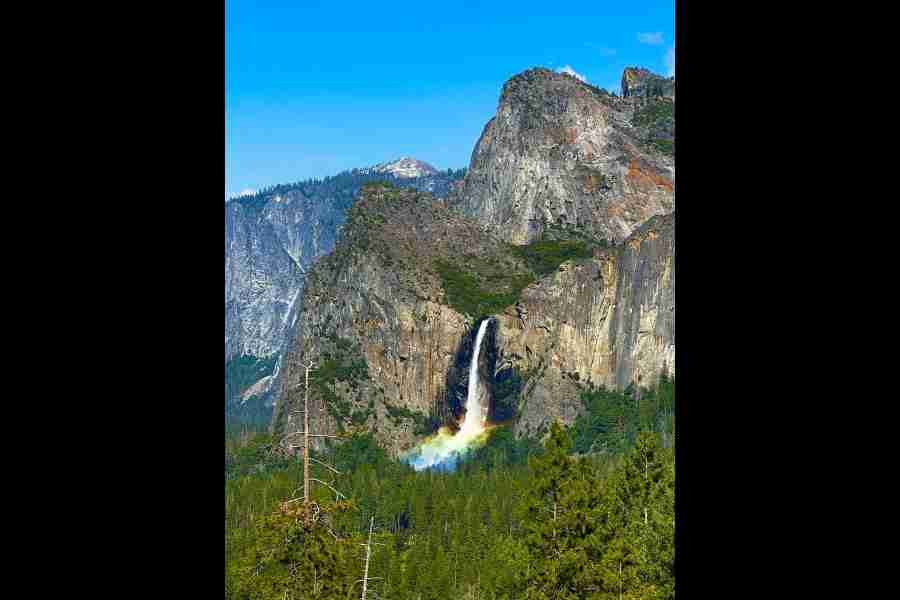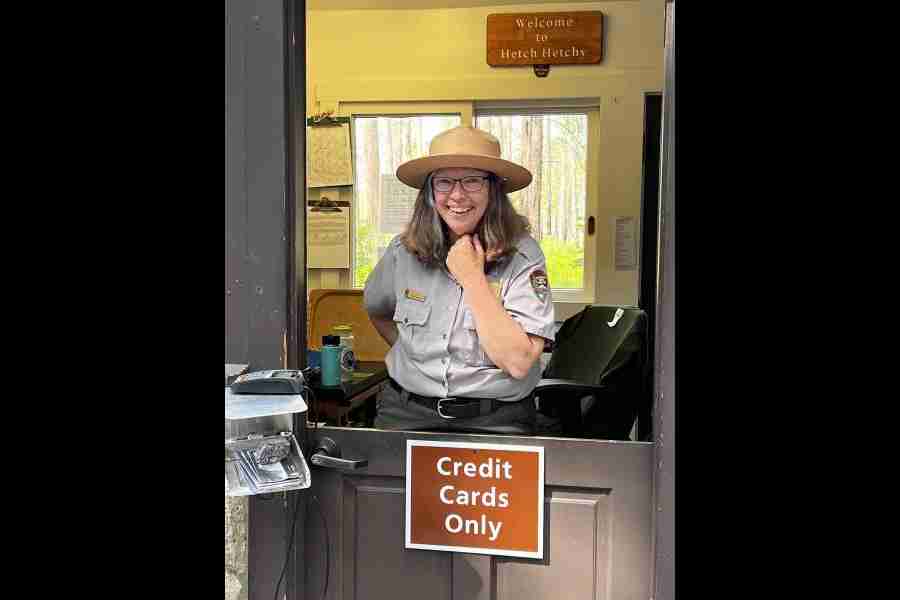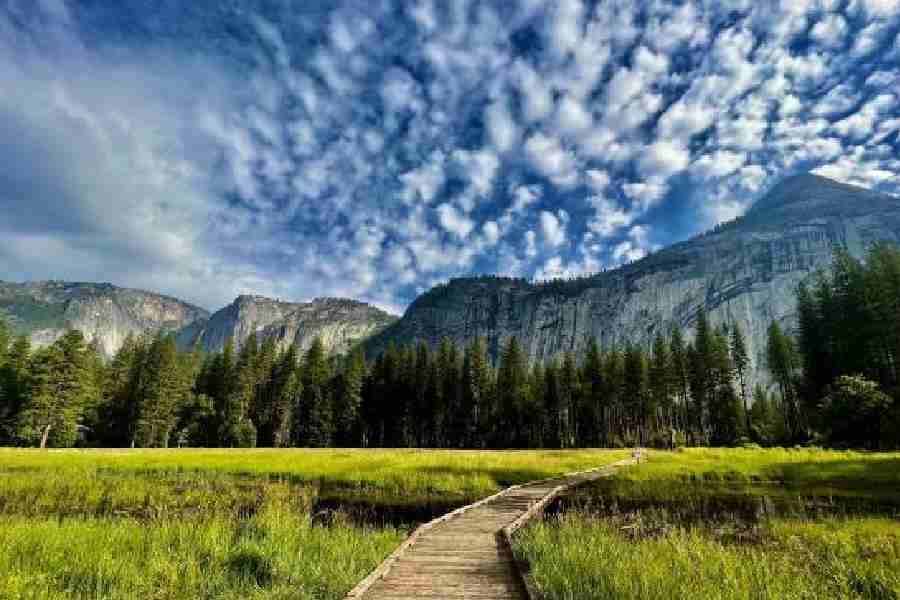Nothing quite prepares you for the experience of being in Yosemite National Park in the US, no matter how many guidebooks and photographs you go through before the visit. This is what I found during my visit this June.
Hailed as “one of the best places on Earth”, Yosemite is a region of unparalleled rugged beauty created by ancient mountains, stunning alpine meadows, pristine glaciers and two major rivers, the Tuolumne and Merced.
It holds one of the tallest waterfalls of the continent (the three-tiered Yosemite Falls at 2425ft) and the largest trees (the giant sequoias). The rivers have been designated as wild and scenic rivers. Yosemite is the oldest national park in the US, and its awe-inspiring wilderness has something in store for everyone — whether you are an adrenaline junkie who enjoys rock climbing, skiing, or going on intense backpacking trails or an indulgent nature-worshipper looking for stunning scenery to soothe your senses before you head back home.
There is no best time to visit this place steeped in natural beauty and teeming with flora and fauna. In the summer, you can soak in the bliss of the high country and Tuolumne Meadows. In spring, you can delight in the rippling streams and gushing waterfalls that come alive. In the winter, you will marvel at the snow covering the age-old granite or go cross-country skiing if you’re up for it.
Yosemite National Park had been on my wishlist ever since I began visiting the US some seven years ago, and finally, I visited this year. And it was certainly worth the wait.
I stayed there for four days exploring places I had earlier only read about — the Tuolumne Meadows, Wawona, Bridalveil Creek, Mariposa Grove, Olmsted Point, and others, collecting great memories and experiences.

Shades of Yosemite Waterfalls
Looking back
It is believed that it was at Yosemite that the concept of national parks was first formed. The collective actions of involved US citizens as well as governments here have laid the foundation of conservation efforts, making it a model for the whole world today.
The early beginnings of human life in the Yosemite Valley are cloaked in mystery, making it a fascinating realm of myth and mystique. It is tough to attest to facts as there are no written documents, but it is clear that American Indians have been the oldest inhabitants here, and brave tribes with their legendary warlike prowess lived there for thousands of years.
Sometime around the mid-1800s, white settlers entered the region, first for trapping and later as entrepreneurs. As they started settling down in the region, the infrastructure of the mountainous area was developed to connect the northern and southern boundaries with wagon roads and settlements were formed.
In 1890, naturalist John Muir (a name synonymous today with Yosemite’s conservancy) and writer-editor Robert Underwood Johnson made concerted efforts to make the then US government set aside specified land for Yosemite National Park. Finally, in 1906, a substantial area was designated as Yosemite National Park that instantly saw a huge rise in the number of visitors to the place. It still receives a significant number of visitors from across the world.
Beyond the awe-inspiring natural beauty lies the engrossing history of starkly different cultures that lived together and sometimes violently clashed owing to their inherent differences, going on to create a canvas of rich tones of dreams and perseverance, adventure and discovery, conflicts, and hardships amidst diversity, all making up one of the finest national parks in the world.
Incidentally, the park is celebrating a century of conservation through the Yosemite Conservancy this year.

One of the most thrilling camping sites at Yosemite
A landscape of geological wonders
Designated a World Heritage Site in 1984, I stood in awe of the towering mountains with their hard granite walls and jutting cliffs, the tumbling waterfalls, clear mountainous streams crisscrossing the park and scenic rivers.
The towering granite monoliths were created by glacial erosion over centuries and every view is breathtaking, whether you’re out in the early morning or catching the sun go down. Every minute you spend in Yosemite National Park remains frozen in your memory as you bear witness to the natural wonders caused by the elements over the years.
Minute by minute, geology continues its incessant action and meteorological forces continue to shape the landscape here while life adjusts accordingly.

A naturalist welcoming us to the Park
Amazing flora and fauna
Owing to its unique geographical location and the forces of nature that shaped it, the region has been home to some spectacular flora and fauna. There are towering trees, the famous and often clever, black bears. There are beings that crawl and glide like rare snakes, pesky insects, rare species of birds and plants and secret fungi. It is a mysterious wonderland teeming with astounding biological diversity. As the setting has deliberately been left raw and untouched by humans, Yosemite National Park has come to be known as a “mountain laboratory of the natural world”.
Wildlife is protected in Yosemite. You are legally bound by conservancy laws here. So, all animate forms have found a sanctuary here with a range of elevations (from 2,000-13,000 feet) within the park and corresponding living conditions to support and sustain life.
There is a mind-boggling variety of more than 1,500 species of plants here. From tiny lichens and fungi to towering sequoias, the range covers almost every category of vegetation. At least 18 different species of conifers grow in the park, the notable ones being the beautiful white-and-red firs. Among the broad-leaved variety, there are impressive oaks and the mountain dogwood. Along the flowing streams and rivers, you find the willows and alders, and the cottonwoods with their dual-toned leaves. Blooming flowers with quaint names like the Lewis’s monkey flower and Western monkshood add their unmistakable charm to the landscape.
Yosemite is perhaps best known for its giant sequoias. The mature trees are easily recognisable by their massive columnar trunks devoid of any branches for 100-150 feet. The foliage is bluish-green in colour. The bark is non-resinous and resistant to fire. Sequoia wood is quite resistant to decay as well. The tree becomes mature at 700-800 years and sequoias are known to last at least 3,200 years.
And now, the animals. The famous black bear holds both fascination and fear in the hearts of Yosemite campers. They are common throughout the park, emerging more in the evenings when they set out to forage.
Other animals that you may be lucky to spot during your sightings are the mule deer, American pika, squirrels and chipmunks, the normally shy coyote, big-horn sheep, and marmot.
Yosemite is home to more than 200 different species of birds and the more common ones that you’re likely to come across during your visit are the American dipper, a water bird, the bright blue stellar’s jay that is so noticeable everywhere, acorn woodpecker with its prominent red head marking, Clark’s nutcracker, also known as the “camp robber”, and the black-headed grosbeak.
If you are an ardent birdwatcher or photographer, you will probably be scanning the skies and trees feverishly for the great grey owl, peregrine falcon, black swift, grey-crowned rosy-finch, the northern goshawk and a few others on the “wanted list”. Consider yourself lucky if you spy one.
Staying in Yosemite
You can spend up to a week in Yosemite National Park and still come away feeling you haven’t had your fill. I stayed for four days. There is a good choice of hotels throughout the park with a range from rustic to regal, modern to old-world, casual to upscale. Most will have good amenities attached to them like restaurants and dining rooms, coffee shops and pizza decks and heated swimming pools. There is something for every kind of traveller visiting the park.
There are as many amazing ways of experiencing Yosemite as you can possibly think of, whether you are just passing through (no one does that) or spending quality time with the family.
Shiladitya Chaudhury is a communication consultant and a restaurateur co-owning popular brands Oudh 1590 & Chapter 2. His passion for wildlife photography takes him to the remotest of jungles.
